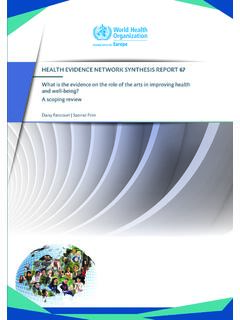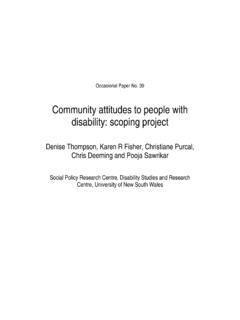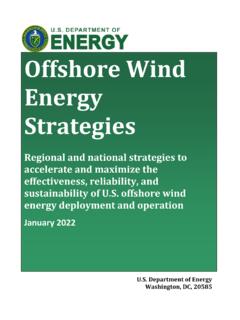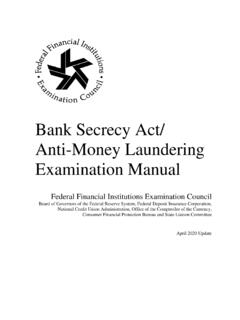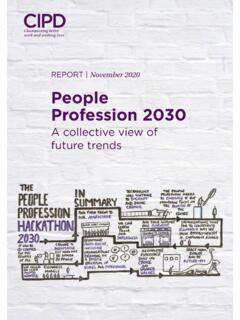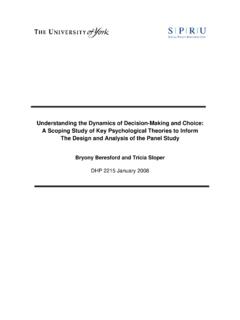Transcription of Introduction - Deloitte
1 Benchmarking the new auditor s reportKey audit matters and other additional informationAudit & AssuranceContentsIntroduction 01 Benchmarking results: key audit matters 03 Goodwill and intangible assets 05 Revenue recognition 08 Taxation 10 Provisions 12 Pension accounting 13 Audit procedures to address KAMs 14 Additional information in the auditor s report 15 Determination of materiality 15 Group scoping 16 Contacts 19 IntroductionReleased six months after the end of the 2016 calendar year, this publication is the first comprehensive analysis of the new auditor s report with a main focus on the new key audit matters.
2 Our first impression is: a first step has been made, but the journey has not yet has changed?The annual reports of companies listed on a stock exchange in Switzerland include the auditor s opinion on the consolidated financial statements and the standalone financial statements of the holding company. The audit report on consolidated financial statements prepared in accordance with IFRS, Swiss GAAP FER or US GAAP has now changed for listed companies. After a five year project led by the International Auditing and Assurance Standards Board (IAASB), followed by a transition period, auditors of listed entities needed to apply the revised International Standard on Auditing (ISA) 700 and the new ISA 701 for the first time in their audits of financial statements for periods ended December change comes from a demand by investors and users of financial statements for more insights and transparency into the audit.
3 The revision of ISA 700 has also led to a new structure of the audit opinion. With the new structure, the auditor s report begins directly with the opinion and the identification of the document that has been audited. Investors and users of financial statements benefit from an increased understandability of the auditor s listed companies, the new auditor s report discloses the matters that were of most significance in the audit. The new ISA 701 defines them as key audit matters . With this information the auditor's report has been transformed from a standard pass/fail report into a more meaningful and customised report and represents a move towards more clarity and benefits of the new structure and disclosing key audit matters were discussed in detail in our earlier publication Clear, transparent have we analysed?This publication analyses the recently published new auditor s reports for companies in Switzerland listed at the SMI ( Swiss Market Index ) or SPI ( Swiss Performance Index ).
4 We selected a representative sample of 50 companies: 19 SMI companies and 31 SPI companies. These 50 companies cover a broad range of industries and sizes. As for their consolidated financial statements, 70% prepare them in accordance with IFRS, 20% with Swiss GAAP FER and 10% with US GAAP. 01 Benchmarking the new auditor s report | Key audit matters and other additional informationSwiss GAAP FER is mainly applied by SPI companies and IFRS by SMI companies. The holding company information is subject to Swiss law and therefore prepared in accordance with the requirements of the Swiss Code of Obligation (SCO).For the 50 companies, we have analysed both the auditor s report on the consolidated financial statements as well as on the standalone financial statements of the holding company. The analysed companies are all audited by one of the Big 4 audit firms ( Deloitte , EY, KPMG and PwC).
5 Our main focus was to see how the requirements of the revised ISA 700 and the new ISA 701 have been implemented in practice. In particular, we were interested to see which audit areas have been identified as key audit matters and how they have been addressed. We were also interested in additional information such as the materiality and group are the key messages?Our most important finding in the analysis of the new audit report is that audit firms in Switzerland apply the new auditing standards in different ways. We noted two divergent trends: two Big 4 audit firms did not disclose voluntary additional information such as reporting materiality and group scoping and limited themselves to the minimum contrast, the other two audit firms disclosed more information than was required by the standards to increase transparency. Deloitte was one of these two firms and, as a firm, we have concluded that information relating to materiality and group scoping is also important information for the readers of the financial understand from the results of our analysis that audit firms support innovation and are willing to provide investors and other stakeholders with greater transparency into the audit as well as insights.
6 We at Deloitte , are of the opinion that the more transparent we are in our daily business, the better the quality of our work will be. We, as a firm, are keen to go the extra mile to respond to regulatory and investor expectations and introduce enhanced information in our new audit will be the challenges?As stated at the beginning, a first step towards greater transparency and understandability has been made. However, the journey has just started. Both auditors as well as board members, management, investors and other stakeholders need to balance the right level of , there is a risk that the new auditor s report becomes a boilerplate report disclosing standard key audit matters without tailoring to the companies circumstances or without revising them in subsequent years. In light of this, we as audit firms need to be proactive in reflecting these changes in the auditor s company and industry specific circumstances should be considered prior to disclosing certain key audit matters or materiality and group scoping information.
7 We do not consider that there is only one approach that fits all situations. Consequently, we are encouraging our audit teams to discuss such matters with audit committee members and management at an early stage of the audit in order to agree on an approach which meets the expectations of the investors and users of the financial statements whilst not disclosing sensitive financial Aubertin, Managing Partner, Audit & Assurance02 Benchmarking the new auditor s report | Key audit matters and other additional informationOur analysis shows that all auditor s reports on the consolidated financial statements disclose at least one key audit matter (KAM) in specific situations but not more than seven KAMs. On average, the auditors disclosed KAMs per group audit. In comparison, the auditor s reports on the financial statements of the holding company describe KAMs on average.
8 This number is interesting as there are already two presumed significant risks as per Swiss/International Standards on Auditing (SAS/ISA): management override of controls and revenue recognition. Depending on their nature, these risks may not require significant auditor attention, and therefore would not be considered in the auditor s determination of KAMs. Nevertheless, given this background, a low number of KAMs might be seen as slightly range of KAMs reported in the auditor s report on the financial statements of the holding company is far lower. It ranges from no KAM up to two KAMs. In 30% of the analysed auditor s reports on the holding company the auditor stated that there were no KAMs. In contrast, 35 out of 50 auditor s reports (70%) disclose one or two KAMs. All of these reports disclosed valuation of investments and/or loans as one of the KAMs.
9 In two cases the auditor disclosed the topics of going concern and impairment of intangible assets as the second let s look a bit deeper into the KAMs relating to the consolidated financial statements. All auditor s reports analysed contain at least one KAM. In fact, a quarter of analysed reports (26%) disclosed only one KAM. 10 out of 50 companies (20%) disclosed two KAMs and 11 out of 50 companies (22%) disclosed either three or four KAMs in the attached audit opinion. In contrast, three companies disclosed five KAMs, whereas two companies disclosed more than five KAMs (maximum seven KAMs).Number of KAMsGroup FSHolding FS012345678 MedianAverageMaxMin When analysing the number of KAMs per audit firm, 3 out of 4 audit firms disclosed more KAMs than the average ( ), Deloitte ( ), EY ( ) and KPMG ( ) all show more than 3 KAM per auditor s report on average.
10 In comparison, PwC only disclosed 2 KAMs on results: key audit matters03 Benchmarking the new auditor s report | Key audit matters and other additional information62%44%38%24%14%12%10%10%6%6%6 %4%4%4%4%4%4%2%2%6%010203040506070 Percentage of companiesGoodwill andintangible assetsRevenue RecognitionTaxationProvisionsPension accountingBusiness acquisitionsand combinationsInventoryFinancial instrumentsDiscontinued operationsInsurance reservingIT system and controlsOther risksRestructuring Accounts receivableand loansSecuritiesPlant, propertyand equipmentCapital expenditureManagement estimationsInvestment propertyGoing concern31 audit reports (62%) have reported goodwill and intangible assets being either one or two KAMs. Trailing a fair distance behind in second place is revenue recognition related audit matters (22 companies have reported in total 23 KAMs, being 44% of all companies) and third place goes to taxation related audit matters (19 companies have reported 26 KAMs, being 38% of the analysed companies).










